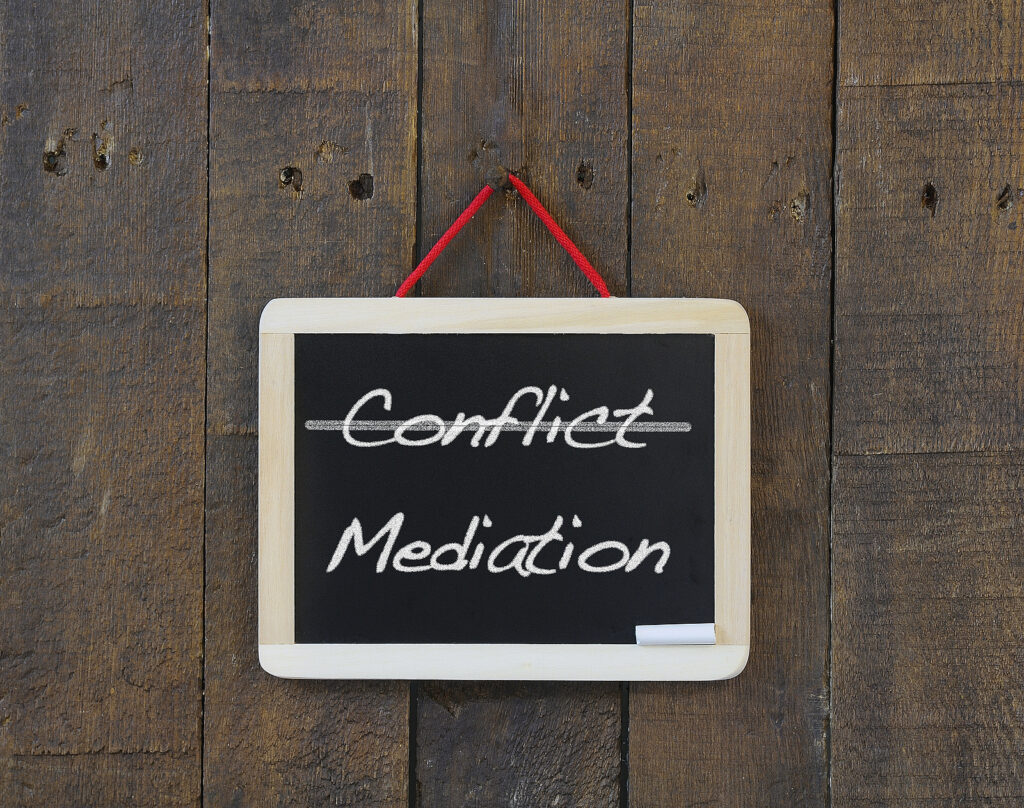
What Is Mediation?
The Mediator’s Role
The mediator plays an important role in helping the parties to better understand the root causes of their conflict and exploring potential solutions. They actively promote positive and productive communication between the parties, with the overarching goal of facilitating a fair and amicable resolution. By establishing a safe and non-confrontational environment for discussion, mediators encourage greater openness and honesty among family members regarding their disputes. Mediators also help family members develop innovative approaches to problem-solving, encouraging the parties to consider a wide range of possible solutions. A mediator will never impose a solution on the parties, but rather will facilitate the process in which the parties can arrive at a voluntary agreement.
Mediation Process In Ontario
The decision to use mediation to address their issues is made by the parties themselves or in consultation with their legal representatives. Whether a party is self-represented or represented by a lawyer, there is a shared obligation to consider resolution through a family dispute resolution process, provided it’s appropriate. This obligation is outlined in sections 7.3 and 7.7(2) of the Divorce Act, and section 33.2(2) of the Children’s Law Reform Act.
The Parties or their legal representatives may choose a mediator that suits their preferences. If the parties cannot agree on a mediator, the court can appoint one at their request, but this can only happen if both parties agree to mediation. The court’s power to appoint a mediator is outlined in section 31 of the Children’s Law Reform Act.
After selecting and retaining a mediator, the mediator will contact the parties to conduct an intake session to explain the mediation process, clarify their role, and emphasize their impartiality. Parties are also asked to provide, usually through the completion of an intake form, background information on the dispute, relevant documents, and the issues they want to address.
Once the initial contact between the parties and the mediator has been made, the next step is the actual mediation session. Before beginning the mediation, the mediator will take some time to explain the process. They will explain how they plan to run the mediation, what the rules for the meetings are, and how they’ll handle any problems that come up. It’s crucial to remember that mediation is entirely voluntary. At any time during the process, if one party decides they don’t want to continue, the mediation ends without any resolution being reached.
In family disputes, the main concerns typically revolve around matters like parenting arrangements (referred to as “decision-making responsibility” and “parenting time”), child support, spousal support, and property issues, including in the case of married spouses the equalization of net family properties. Early on, it’s crucial to identify areas of agreement and disagreement. Parties might have very different perspectives on these issues, but the mediator will help focus the areas of dispute to enable them to focus on finding practical solutions.
Addressing the issues involves a thorough exploration of available options. Through negotiation and brainstorming, the parties work together to identify common ground and develop mutually acceptable agreements.
Achieving an agreement involves sifting through all the available options until a settlement is reached. Parties may reach temporary agreements on specific issues at different stages of the mediation process, with the understanding that these temporary arrangements may be revisited as part of a final resolution of all issues. Once all matters are settled, the mediator prepares a draft memorandum of understanding, setting out the parties’ settlement in principle, which can later be formalized into a binding settlement agreement.
If the parties are unable to come to an agreement on some or all of the issues, the mediation process concludes without a resolution with respect to those issues. Subsequently, the parties are free to pursue alternative dispute resolution methods, such as arbitration or litigation.

Advantages of Mediation
Mediation is usually quicker than court proceedings due to court, especially in the GTA with many courts facing lengthy delays and backlogs.
Unlike litigation, where there is often a winner and a loser, mediation strives to achieve win-win solutions. It helps reduce hostility and animosity between the parties, which is crucially important especially where they will be co-parenting children in the future.
The court process can be emotionally and financially draining due to it’s formal complexity, strict procedural requirements and it’s adversarial nature. Mediation, in contrast, focuses on collaborative problem-solving, making it less emotionally challenging.
Disadvantages of Mediation
Mediation may not always be the best method for resolving disputes, depending on the nature of the issue and the specific circumstances. For example, if parties are not willing to exchange necessary financial disclosure or negotiate in good faith, the chances of mediation succeeding are materially reduced.
Mediation is voluntary, and there’s no guarantee that parties will reach an agreement. If no consensus is reached, the dispute might remain unresolved.
Mediation can be more complex in cases involving multiple parties or intricate issues, making it challenging to find mutually acceptable terms.
When one or more parties are uncooperative or resistant to engaging in good faith, it can hinder progress and possibly lead to a deadlock. People with a “winner-takes-all” attitude are less likely to benefit from mediation, which relies on compromise and cooperation.
Mediation may not be suitable for disputes requiring immediate resolution, such as emergencies or cases involving the safety of a party or child.
When Is Mediation Not Appropriate
Mediation is a valuable tool for resolving conflicts, but it’s not always the right choice. There are situations where mediation may not be the best approach. For example, when there’s a significant power imbalance between the parties, such as in cases involving domestic violence, financial manipulation, or emotional abuse, mediation might not be safe or suitable. In such instances, it could put the disadvantaged party at risk or lead to an unfair outcome.
Our mediators have strategies to address power imbalances effectively, starting with a screening process for domestic abuse. If it’s clear that the power difference cannot be corrected and there’s a risk of the vulnerable party agreeing to a materially unfair settlement, the mediator will consider ending the mediation.
Types of Mediation
Before mediation begins, the parties can choose between open and closed mediation. In open mediation, the mediator will provide a report that can be shared with the court in a subsequent legal proceeding. In closed mediation, everything said during mediation remains confidential, and only the fact the mediation did or did not result in an agreement will be shared with the court in a subsequent legal proceeding.
Joint or Private Sessions
The nature of the dispute will determine whether the mediation process will be conducted in joint or private sessions. In joint sessions, the parties talk directly to each other with the mediator’s help, giving them a chance to express their concerns and viewpoints. In private sessions, the parties meet separately in different rooms, and the mediator moves between rooms to discuss their interests, concerns, and potential solutions privately. This way, they can explore possible solutions without direct confrontation.

Goals of Mediation
Mediation is goal oriented, serving as a means to a particular end –a negotiated settlement. First and foremost, mediation functions as a process though which individuals seek to resolve their disputes by coming to the table and arriving at an amicable resolution of the issues arising from the breakdown of their relationship. Essential secondary objectives encompass enhancing communication and alleviating tensions between the parties.


